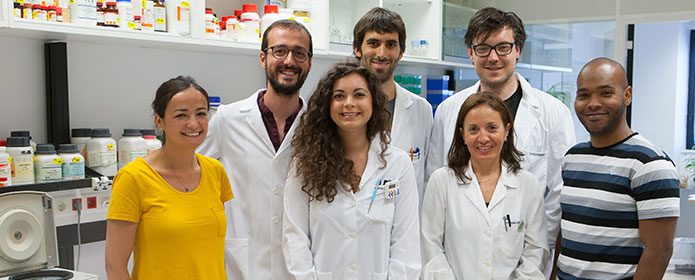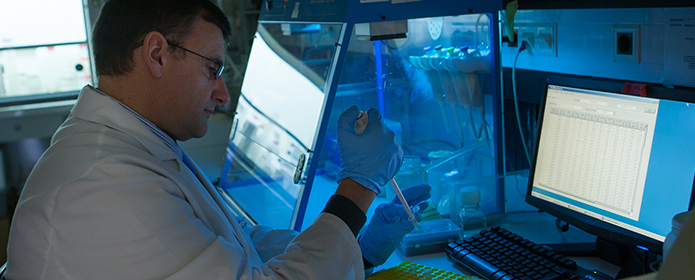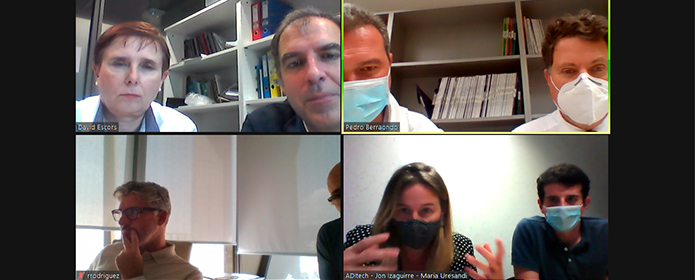Scientists at CIMA discover a gene that is necessary for cellular replication and the structure of the chromosomes
This non-coding RNA may work as a therapeutic target against lung and breast tumors

Scientists at the Center for Applied Medical Research (CIMA) at the University of Navarra have discovered CONCR, a long non-coding RNA that regulates cell replication and the formation of the structure of the chromosomes which is directly related with the multiplication of tumor cells. This finding, which may be used as a therapeutic target against different cancer types such as lung and breast tumors, has been published in the journal Molecular Cell. Moreover, these results have merited a commentary in the latest issue of the journal Cancer Discovery.
During cellular division each cell duplicates and emplaces its DNA in chromosomes. Each chromosome is made up of two sister chromatids, which, joined together, produce the well-known X-shape of the chromosomes. The correct regulation of this process is fundamental to guarantee accurate transmission of the genetic information to the daughter cells. “Our study describes this new RNA which we have analyzed in hundreds of both healthy and tumor tissue samples. Through sequencing techniques and computational analysis we have found that there is greater expression of CONCR in tissues with different types of cancer, such as lung and breast cancers, than in the samples of normal tissues”, Dr. Maite Huarte, director of the research, explained.
The researchers have focused on understanding the mechanisms of action of this gene with interesting results. “We have seen that the expression of CONCR is directly related with the proliferation capacity of the tumor cells. Specifically, CONCR regulates the activity of DDX11, a protein that intervenes in DNA replication and in sister chromatid cohesion, fundamental processes in cell division”, explains Dr. Francesco Marchese, first author of the work.
Clinical applicationThe findings developed in CIMA suggest that CONCR could be a target to be used for the treatment of many types of tumors, as it intervenes in mechanisms that are inherent to cells that proliferate actively, regardless of their tissue of origin.




